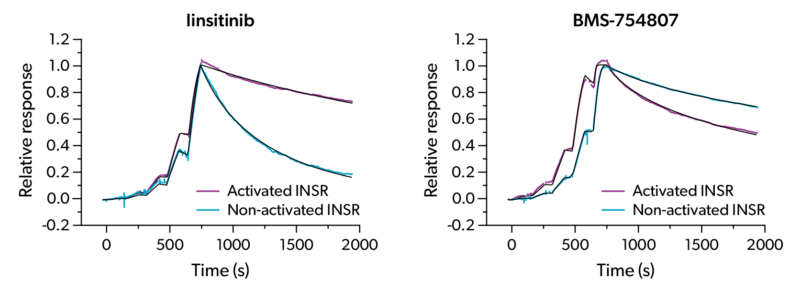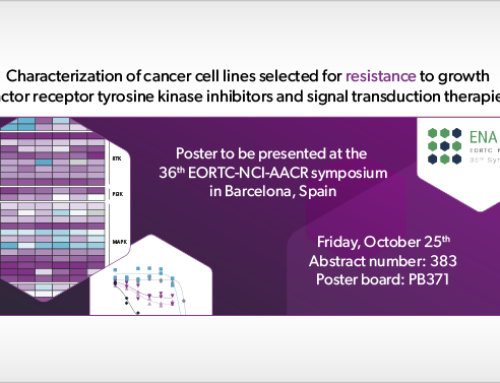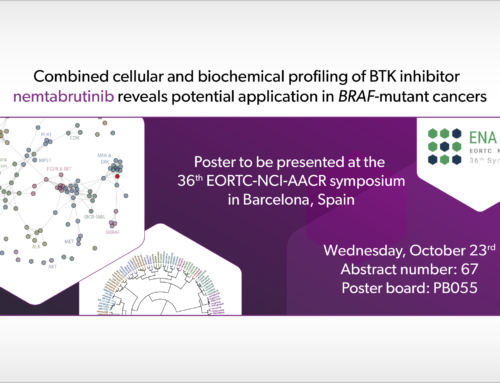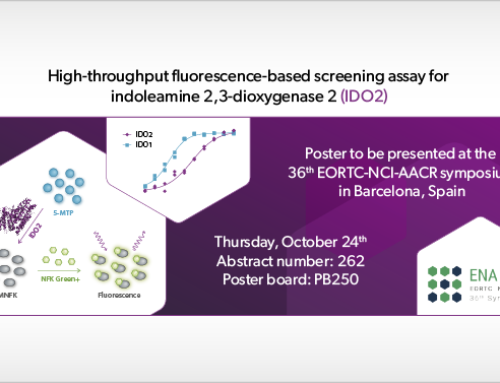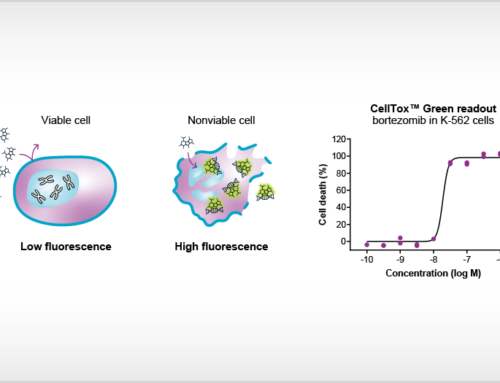Determination of target residence time may help you to differentiate your drug candidate from competitor compounds. Drugs that reside on their target for several hours will have the advantage that their pharmacodynamic effect will last even after the drug has been eliminated from systemic circulation. The ResidenceTimer™ profiling service gives a mechanistic rationale for the distinct pharmacological features of a drug candidate compared to another.
Oncolines has now expanded their ResidenceTimer™ platform [1] with 56 new biotinylated kinases, resulting in more than 180 kinase assays being available for determination of compound binding kinetics using Biacore. This includes kinases for which both an activated and non-activated form is available, allowing elucidation of activation state-dependent kinetic profiles as illustrated in the Figure. Binding kinetics of your compound can be determined on one or multiple targets with a turnaround time of three weeks. Visit www.residencetimer.com to find out if your target of interest is included in the ResidenceTimer™ panel.
Why would you profile your compound using the ResidenceTimer™ service?
• Measurement of kinetic selectivity within a family of targets
• Determination of target residence time for differentiation of drug candidates
• Measurement of compound affinity in the absence of ATP and substrate
• Generation of hypotheses on pharmacological behavior in vivo
In addition to the panel of validated kinases, Oncolines can develop customized surface plasmon resonance assays with your protein, antibody or RNA of interest. For example, Oncolines has developed binding assays for demonstration of the binding of bacterial lysate OM-85 to Toll-like receptors TLR2 and TLR4, and the TLR4/MD2 complex, as published in Mucosal Immunology [2]. Information requests for studying specific small molecule–protein interactions, or more complex interactions, can be sent to services@oncolines.com.
Figure: ResidenceTimer™ study of inhibitor binding to activated versus non-activated insulin receptor (INSR). Sensorgrams of single-cycle kinetics experiments of the INSR inhibitors linsitinib and BMS-754807. Linsitinib has a longer target residence time on activated INSR (left), whereas BMS-754807 has a longer target residence time on non-activated INSR (right).
References
- Willemsen-Seegers et al. (2017) Compound selectivity and target residence time of kinase inhibitors studied with surface plasmon resonance. Journal of Molecular Biology 429, 574-86.
- Khameneh et al. (2024) The bacterial lysate OM-85 engages Toll-like receptors 2 and 4 triggering an immunomodulatory gene signature in human myeloid cells. Mucosal Immunology online first 4 March 2024.
Oncolines B.V. is a precision medicine services company in oncology and cancer immunotherapy. Oncolines is part of the Symeres group of companies, a group of high-quality CROs and CDMOs based in Europe and the United States.


